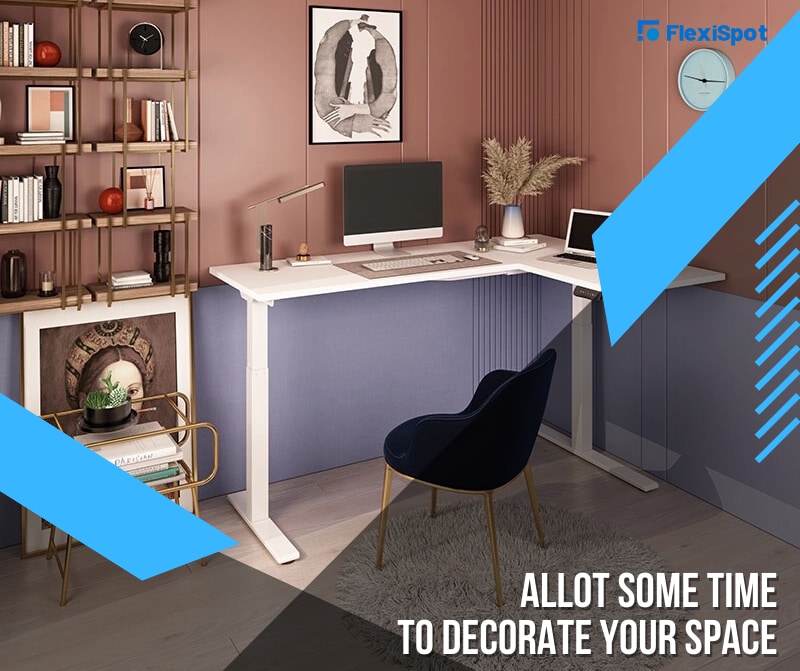Telecommuting or working from home started way before the pandemic. It has already been practiced by many industries and companies for decades. People started to notice more of it when the pandemic disrupted lives and companies found themselves making the switch. What is not to love in a work-from-home set-up? You don’t have to dress up, go through the daily commute, or be subjected the whole day to your superior’s eyes. You are offered more flexibility, being able to work at home or anywhere you like.
But contrary to what most people believe, it’s not really easy to shift from working in an office environment to a home office. As your remote days get longer and longer, you would start noticing “small nuances” that you thought you won’t miss but are now playing a key role in your whole working dynamic.
For instance, it’s challenging for social butterflies to stay put at home with no one to talk to or work with in person. You would surely notice the absence of muffled chatter indicating that people are talking, the sound of approaching footsteps and shuffling paper, the hurried tapping on keyboards, or clicking on the mouse. Some employees miss this about working on site: there’s something appealing with the sound of subtle noise and makes one be more productive, most especially to people who love scheduling workout sessions every night.
There are ways you could do to make it easier and we listed them down below:
Secure your spot
Once it’s been decided that you are going to work remotely, look around your home and designate an area to be your workspace. One consideration is space. You need to look for an area where your furniture and old needs will all fit. You also have to take at a look at nearby sockets so if your gadgets run out of electricity, it would be easy to plug them in. Another factor in choosing the best spot is lighting. Is your chosen area work-friendly? Does it give off ample lighting that won't’ blind your eyes or cause you a headache? Be honest with your lighting situation because it’s important to avoid straining your eyes after just a few hours of working. Write down the things that you need. You must have an extension strip, auxiliary lighting, and maybe a side table or shelf for your office supplies.
Invest in a good table
Consider investing in ergonomic furniture including a standing desk. You will reap benefits while working from home at a good table. There will come a time that you will decide to work back at the office or not. It doesn’t matter when you invest in a good standing desk. Why? You can still use this for different purposes at home.
One type of ergonomic table that we would recommend is height adjustable and allows you to shift from sitting on your favorite chair to standing up at any point of the day. The real bonus here is achieving maximum comfort that allows you to work for hours without developing any pain or soreness compared to working on a regular desk.
While you’re at it, you should also pair your standing desk with an ergonomic chair that will make sure you’re comfortable and also able to maintain good posture. Moreover, you will be protected from developing a cardiovascular disease and be relieved of mental health issues, one by one. In this case, comfort can give you happiness and focus while you work for long hours. You will surely notice how productive you have become.
Think of the rest of your home as an office
You can slowly transition to a work-from-home setup once you see other parts of your job in action. The kitchen at home is your pantry. You may think of the other rooms as a stock room, shareholder room, conference room, and more. Of course, this is probably not close to what you had at the office. The rest of the rooms at home can be thought of as your usual stockrooms or closed offices.
Allot some time to decorate your space
You would slowly feel the legitimacy of working from home as you start to ease into a routine for this kind of setup. Try decorating your workspace like how it looked when you were still working at the office. While you may want something unconventional, having a dedicated workspace with the same design for years would save you from the initial shock and the adjustment period. When you have already conditioned yourself to this kind of setting, then it will be easier to eventually redecorate and reorganize the space according to your taste and preference.
Keep contact lines available
Even though you don’t see each other physically, you could still connect with the people you love. Working at home doesn’t mean you have to isolate yourself and let go of friendships you’ve had for years. We live in a digital age so it must be easier to keep in touch through social media, SMS, or the occasional phone calls (when you’re both not busy with work, of course). Just because you are working remotely or at home, it doesn’t mean that you have to detach yourself from your social circles. Detachment can affect you negatively in the long run. You would notice that you have become no longer productive or are more prone to brain fog. Having the right balance of work and social life is healthy and something you should work on achieving.
Since you’re just transitioning from reporting to the office and now working from home, you need to carry the proper mindset. Know what you’re about to do and how different it is from how things were. A proper mindset will help ease you in.
Think of this analogy. Fish cannot just be dumped inside your aquarium at home. The fish must first be acclimated to the new environment so it can comfortably move and thrive after an adjustment period.
You should not make a transition to a work-from-home setting lightly. You may need to do a few more things if you are a social butterfly. Yes, you will crave social interactions and the usual activities you do outside. But once you get the ball rolling, we could assure you that you’ll be happy about choosing to make the switch. Don’t forget that you should take breaks every once in a while to take care of yourself.




